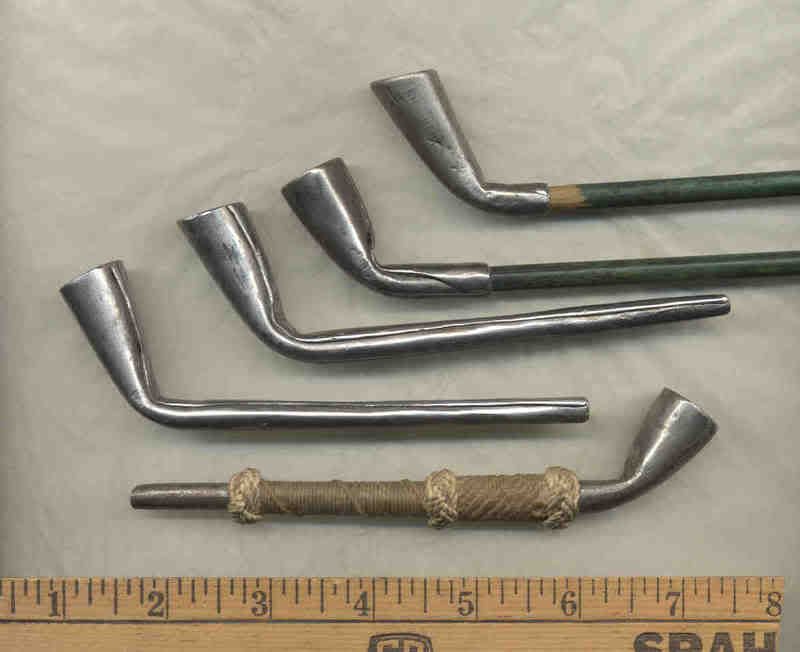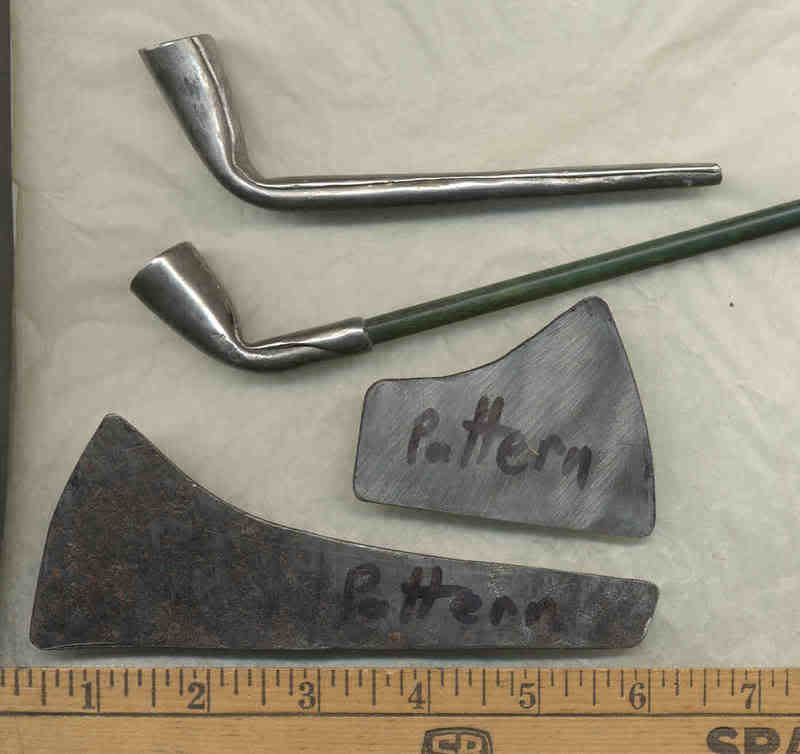Thanks for the kind words, guys.
I came across several pictures of original sheet iron and sheet brass pipes in some books and museum exhibits when I was looking for other Fur Trade era iron trade goods to make. I was surprised at just how far back they went here in North America - as long as those clay pipes did.
These are all cold-forged to shape. I cut my pattern out of about 20 guage sheet iron, smooth out the edges, and then start hammering. I did re-shape an old chisel/punch to make the form for the inside of the bowl. And I use a small swedge block to help round up the stem - a metal block with several sized half-round grooves in it. I tried using a 1/4 inch rod as an inside form to roll the stem up around, but it ended up being easier to just hammer it together. Bending the angle between the bowl and the stem narrows the base of the bowl down pretty good for keeping the tobacco in the bowl without making it too hard to draw. It's a bit tricky doing it, but practice makes perfect. When I'm finished hammering them to shape and smoothing/sanding the outside, I run a little bead of Elmer's White Glue along the seam to help seal it. The originals were not soldered or welded, so I don't do that to these. In use, they "gunk up" inside anyway and that seals the seam naturally. In use, they do tend to get a bit hot around the bowl. But so do the clay pipes. There was one brass version dug up at a Seneca Indian village site up in New York State dated to the lat 1600's that still had the stem partially wrapped in some cattail reed. A very interesting project. And they are a whole lot harder to break than those clay pipes!
That little heat when holding it was part of the reason my buddy decided to do that "sailor's grafitti" on the stem of mine. He did the same on his. It adds a bunch of extra "character", and we don't have to worry so much about burning fingertips. And the best part is that they smoke right about the same as those classic white clay trade pipes.
Just another little ... historical fur trade item to tinker with.
Mikey - yee ol' grumpy blacksmith out in the Hinterlands
p.s. The pattern is pretty simple. The top long edge is straight from stem to bowl end. The other edge slowly tapers from end to bowl, and then flairs out for enough metal for the bowl. The profile of that bowl part kind of looks like the profile of a classic tomahawk with a wide sweep along the cutting edge down to a point. If you want to try making your own, I could scan in the pattern with a measuring stick for scale. The iron in a heavy coffee/bean can is a bit thin, but will work - and a little easier to work. Plus, there also were some original "tin" ones - about the thickness of those coffee/bean cans. A half/round slightly tapering groove filed/carved into a wood block would make a great bottom swage to hammer into. Let me know if you want me to post the pattern and I'll scan it it.




